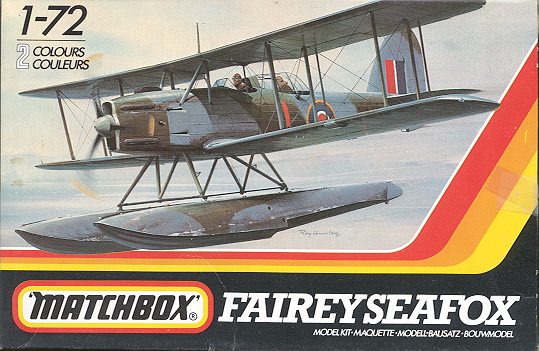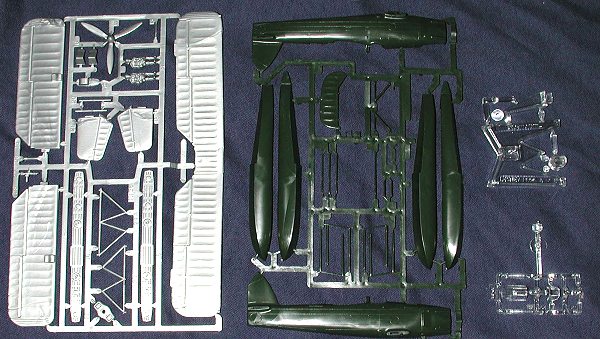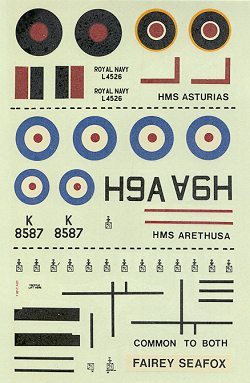
|
KIT: |
Matchbox 1/72 Fairey Seafox |
|
KIT # |
PK 36 |
|
PRICE: |
$ |
|
DECALS: |
Two Aircraft |
|
REVIEW & |
|
|
NOTES: |
` |

|
HISTORY |
Fairey had a long relationship with the Royal Navy in the mid-war period. They developed a number of aircraft for shipboard use and were very much the Grumman of the day in that respect. Fairey aircraft were sturdy, easy to maintain, and what's more, met the specifications needed for the job. One of those specifications was 11/32 for a light reconnaissance seaplane that could be used aboard cruisers. This meant catapults, so the design had to be able to withstand the rigors of a cat shot.
The first production plane was delivered in 1937 and by the outbreak of war, the Seafox was aboard a number of Her Majesty's cruisers. The Seafox participated as a gunnery observation in a number of early war sea battles. Probably the most famous was when a Seafox from the HMS Ajax spotted for British cruisers against the Graf Spee in the south Atlantic. The pilot of that plane was the first FAA officer to be decorated with the Distinguished Flying Cross during that war. With the advent of more aircraft carriers, the need for the plane went away and the last Seafox left the service in 1943.
|
THE KIT |

Matchbox can be thanked for bringing out a number of kits that many thought would never see styrene. From the late 1970s to the mid 1980s, Matchbox and Heller were both producing new kits in a prodigious manner and both were bringing out some very interesting and unusual models.
 Typical of
Matchbox, this one is in two shades of plastic, dark green and silver. It is a
kit that does not have a lot of internal detail and that on the outside is
usually of the raised line variety. However it is quite accurate in outline and
a sound basis for some additional detailing by the more experienced modeler. For
the youngster, it is relatively easy to assemble and all levels of skill will
enjoy the sound engineering involved. There are no optional parts as the Seafox
was not built as a landplane and not designed to carry ordnance.
Typical of
Matchbox, this one is in two shades of plastic, dark green and silver. It is a
kit that does not have a lot of internal detail and that on the outside is
usually of the raised line variety. However it is quite accurate in outline and
a sound basis for some additional detailing by the more experienced modeler. For
the youngster, it is relatively easy to assemble and all levels of skill will
enjoy the sound engineering involved. There are no optional parts as the Seafox
was not built as a landplane and not designed to carry ordnance.
The instructions are well done and like all Matchbox instructions of the time, have all painting instructions at the very end of the construction sequence. Decals are for two planes. One of them in overall aluminum (and that is paint as these were fabric covered aircraft) from Malta in 1939. The other is a camouflaged plane assigned to the HMS Asturais in 1942. Matchbox decals are generally good though a bit thick and matte.
Review kit courtesy of me and my wallet!
If you would like your product reviewed fairly and quickly by a site that averages thousands of visits a day, please contact me or see other details in the Note to Contributors.